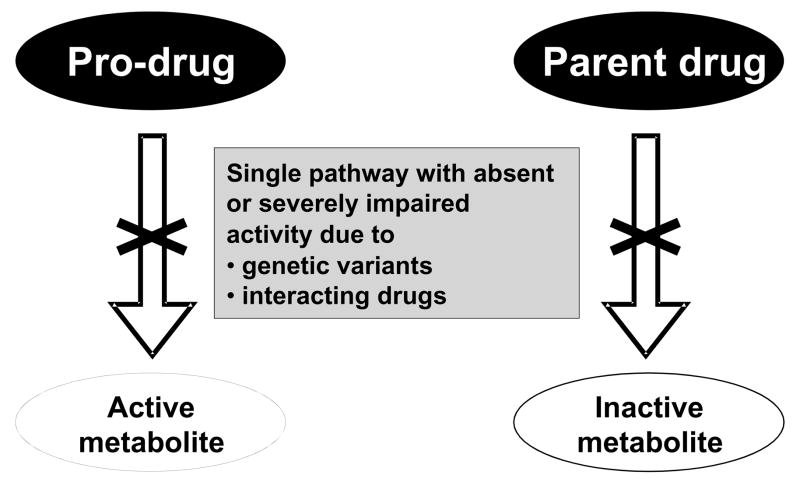Figure 1.
High-risk pharmacokinetics. Drugs that are eliminated by a single pathway can generate aberrant responses if that pathway is absent on a genetic basis, or because of co-administration of inhibiting drugs. This figure illustrates the two scenarios underlying such “high-risk” pharmacokinetic situations. One (left) is the administration of a drug that is itself not active but requires drug metabolism to generate an active metabolite; the absence of the pathway can lead to failure to generate the desired drug effect. This is thought to underlie variability in response to clopidogrel, tamoxifen, losartan, and codeine, as described in the text. The second scenario (right) is the administration of a drug eliminated by single pathway. Absence of this pathway will result in accumulation of the parent drug and thus drug-related toxicity. Adapted, by permission.44

